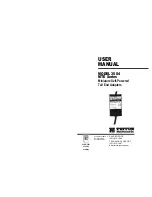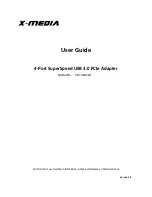
Glossary
GL-5
Cisco Aironet Wireless LAN Client Adapters Installation and Configuration Guide for Windows CE
OL-1375-03
R
Radio Channel
The frequency at which a radio operates.
Range
A linear measure of the distance that a transmitter can send a signal.
Receiver Sensitivity
A measurement of the weakest signal a receiver can receive and still correctly translate it into data.
RF
Radio frequency. A generic term for radio-based technology.
Roaming
A feature of some access points that allows users to move through a facility while maintaining an
unbroken connection to the LAN.
RTS Threshold
The packet size at which an access point will issue a request to send (RTS) before sending the packet.
S
Spread Spectrum
A radio transmission technology that spreads the user information over a much wider bandwidth than
otherwise required in order to gain benefits such as improved interference tolerance and unlicensed
operation.
SSID
Service set identifier. A unique identifier that stations must use to be able to communicate with an
access point. The SSID can be any alphanumeric entry up to a maximum of 32 characters.
T
TKIP
Temporal Key Integrity Protocol. Also referred to as WEP key hashing. A security feature that defends
against an attack on WEP in which the intruder uses the initialization vector (IV) in encrypted packets
to calculate the WEP key. TKIP removes the predictability that an intruder relies on to determine the
WEP key by exploiting IVs.
Transmit Power
The power level of radio transmission.
U
Unicast Packets
Packets transmitted in point-to-point communication.
W
WEP
Wired equivalent privacy. An optional security mechanism defined within the 802.11 standard designed
to protect your data as it is transmitted through your wireless network by encrypting it through the use
of encryption keys.
Workstation
A computing device with an installed client adapter.










































